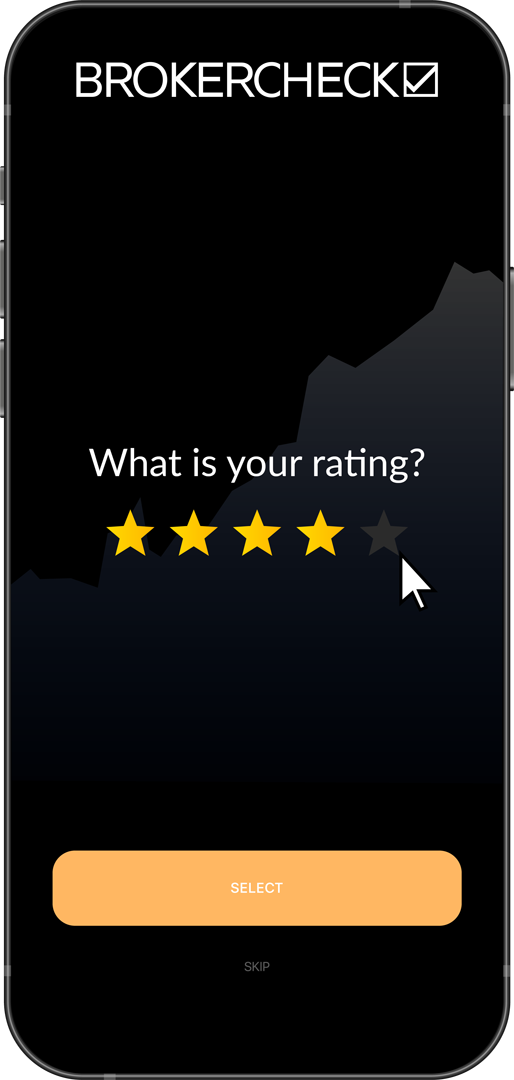1. Overview of the Donchian Channels Indicator
1.1 Introduction to Donchian Channels
The Donchian Channels Indicator, developed by Richard Donchian, is a popular technical analysis tool used by traders to identify market trends and potential breakout points. It’s particularly famous in the world of commodities and futures trading but is also applicable to stocks, indices, and forex markets.

1.2 Historical Background
Richard Donchian, often referred to as the “father of trend following,” introduced this indicator in the 1970s. His work laid the foundation for trend-following and managed futures investment strategies. The simplicity and effectiveness of Donchian Channels have made them a staple in traders’ toolkits.
1.3 Basic Concept and Composition
The Donchian Channels consist of three lines, typically displayed on a price chart:
- Upper Channel: The highest high of the assets’ price over a set number of periods.
- Middle Channel: The average of the upper and lower channels, though this line is not always used.
- Lower Channel: The lowest low of the assets’ price over the same number of periods.
The ‘period’ is a variable component and can be adjusted based on the trader’s strategy, with 20 periods being a common default setting.
1.4 General Application
Traders use Donchian Channels to:
- Identify Breakouts: A price breaking above the upper channel signals a potential upward trend, while a break below the lower channel indicates a possible downtrend.
- Spot Overbought and Oversold Conditions: Prices near the upper or lower channels may suggest overbought or oversold conditions, respectively.
- Set Stop-loss and Take-profit Points: The channels can help in determining strategic points for exiting trades.
1.5 Advantages and Limitations
Advantages:
- Simplicity: Easy to understand and apply.
- Versatility: Applicable across different types of markets and timeframes.
- Trend Identification: Effective in highlighting the prevailing market trend.
Limitations:
- Lagging Nature: Being based on past price data, it can lag behind real-time market changes.
- False Breakouts: Sometimes indicates false breakouts, leading to potential losses.
| Feature | Description |
|---|---|
| Developer | Richard Donchian |
| Key Use | Identifying market trends and breakouts |
| Components | Upper, Middle (optional), and Lower Channels |
| Popular Timeframe | 20 periods (flexible as per strategy) |
| Advantages | Simplicity, Versatility, Effective in Trend Identification |
| Limitations | Lagging Indicator, Potential False Breakouts |
2. Calculation Process of the Donchian Channels Indicator
2.1 Basic Formula
The calculation of the Donchian Channels involves determining three key lines: the Upper Channel, Lower Channel, and the optional Middle Channel. The formulas for these are as follows:
- Upper Channel (UC): Highest High over the last N periods.
- Lower Channel (LC): Lowest Low over the last N periods.
- Middle Channel (MC): (UC + LC) / 2.
Where ‘N’ represents the number of periods chosen by the trader.
2.2 Step-by-Step Calculation
- Selecting the Period (N): The first step is to determine the ‘N’ period. A common default is 20 periods, but traders may adjust this based on their trading strategy and the time frame they are analyzing.
- Calculating the Upper Channel (UC): Identify the highest price point (high) in the past ‘N’ periods.
- Calculating the Lower Channel (LC): Find the lowest price point (low) within the same ‘N’ periods.
- Computing the Middle Channel (MC): Add the UC and LC, then divide by 2. This step is optional as not all traders use the middle channel.
2.3 Example
Let’s consider a hypothetical example with a 20-day period:
- Assume the highest high in the last 20 days is $150, and the lowest low is $100.
- Upper Channel (UC) = $150
- Lower Channel (LC) = $100
- Middle Channel (MC) = ($150 + $100) / 2 = $125
2.4 Adjusting the Period
The choice of ‘N’ can significantly impact the sensitivity of the Donchian Channels. A smaller ‘N’ makes the channel more sensitive to price movements, while a larger ‘N’ smoothens the channel, making it less sensitive to short-term fluctuations.
| Step | Process |
|---|---|
| 1 | Select the Number of Periods (N) |
| 2 | Calculate Upper Channel: Highest High in N periods |
| 3 | Calculate Lower Channel: Lowest Low in N periods |
| 4 | Calculate Middle Channel (optional): (UC + LC) / 2 |
3. Optimal Values for Setup in Different Timeframes
3.1 Understanding Timeframe Selection
Selecting the appropriate timeframe for the Donchian Channels is key to its effectiveness. The ‘N’ period, or the number of periods used to calculate the channels, can be adjusted based on the trader’s focus, whether it’s short-term, medium-term, or long-term trading.
3.2 Short-term Trading
For short-term trading, such as day trading or scalping, traders often use a lower ‘N’ value to capture more immediate market movements.
- Recommended ‘N’ Value: 5 to 15 periods.
- Example: A 5-period Donchian Channel for a day trader using 1-hour charts can quickly identify short-term breakouts and retracements.
3.3 Medium-term Trading
Medium-term traders, like swing traders, require a balance between responsiveness and stability in the indicator.
- Recommended ‘N’ Value: 15 to 30 periods.
- Example: A 20-period Donchian Channel on a daily chart is useful for identifying medium-term trends and potential reversal points.
3.4 Long-term Trading
Long-term investors or position traders will opt for a higher ‘N’ value to filter out short-term noise and focus on more significant trends.
- Recommended ‘N’ Value: 30 to 50 periods or more.
- Example: A 50-period Donchian Channel on weekly charts can provide insights into major market trends and long-term support and resistance levels.
3.5 Sector and Market Specific Adjustments
It’s important to note that optimal ‘N’ values can also vary depending on the market or sector being traded. Volatile markets might require shorter ‘N’ periods for more sensitivity, whereas stable markets might benefit from longer periods.

| Trading Style | Recommended ‘N’ Value | Example Usage |
|---|---|---|
| Short-term (Day Trading, Scalping) | 5 to 15 periods | 5-period channel on 1-hour charts |
| Medium-term (Swing Trading) | 15 to 30 periods | 20-period channel on daily charts |
| Long-term (Position Trading) | 30 to 50+ periods | 50-period channel on weekly charts |
4. Interpretation of the Donchian Channels Indicator
4.1 Identifying Market Trends
The primary use of Donchian Channels is to identify the prevailing market trend. The position of the price in relation to the channels can provide valuable insights.
- Uptrend Indication: When prices consistently touch or break through the upper channel, it suggests an uptrend.
- Downtrend Indication: Conversely, if prices frequently touch or fall below the lower channel, a downtrend may be indicated.
4.2 Breakout Signals
One of the key features of the Donchian Channels is identifying potential breakouts.
- Bullish Breakout: A price closing above the upper channel can signal a potential bullish breakout.
- Bearish Breakout: A price closing below the lower channel might indicate a bearish breakout.
4.3 Trading Ranges and Volatility
The width of the Donchian Channels can offer insights into market volatility and trading ranges.
- Wide Channels: Indicate higher volatility with a larger price range.
- Narrow Channels: Suggest lower volatility and a tighter price range.
4.4 Overbought and Oversold Conditions
Although not a primary function, the Donchian Channels can also hint at potential overbought or oversold conditions.
- Approaching Upper Channel: Could indicate an overbought condition, cautioning against new long positions.
- Approaching Lower Channel: Might suggest an oversold condition, signaling caution for short positions.
4.5 Combining with Other Indicators
For more robust analysis, traders often combine Donchian Channels with other indicators, such as:
- Moving Averages: To confirm the trend indicated by the Donchian Channels.
- Relative Strength Index (RSI): To validate overbought or oversold conditions.
- Volume Indicators: To corroborate the strength of a breakout signal.
4.6 Practical Trading Example
Imagine a trader observing a stock with a 20-period Donchian Channel on a daily chart. If the stock price breaks and closes above the upper channel, the trader might consider this a bullish signal, especially if confirmed by high trading volume or a moving average crossover.
| Signal Type | Interpretation | Trading Implication |
|---|---|---|
| Price touching/breaking upper channel | Potential uptrend | Consider long positions |
| Price touching/breaking lower channel | Potential downtrend | Consider short positions |
| Price breakout above upper channel | Bullish breakout | Possible buy signal |
| Price breakout below lower channel | Bearish breakout | Possible sell signal |
| Channel width variation | Indicator of market volatility | Adjust strategy for volatility |
| Price near upper/lower channel | Potential overbought/oversold condition | Exercise caution in position sizing |
5. Combining Donchian Channels with Other Indicators
5.1 Synergizing with Moving Averages
Combining Donchian Channels with moving averages can help in confirming trends and smoothing out price fluctuations.
- Example: Pairing a 20-period Donchian Channel with a 50-day moving average. If the price is above both the upper channel and the moving average, it reinforces a strong uptrend.
5.2 Utilizing Momentum Indicators
Momentum indicators like the Relative Strength Index (RSI) or the Stochastic Oscillator can complement the Donchian Channels by indicating overbought or oversold conditions.
- Example: A stock price breaking above the upper Donchian Channel while the RSI is above 70 could signal an overbought condition, cautioning against new long positions.
5.3 Integrating Volume Indicators
Volume indicators, such as the On-Balance Volume (OBV) or Volume-weighted Average Price (VWAP), help confirm the strength of the breakout signals provided by the Donchian Channels.
- Example: A breakout from the upper channel accompanied by a significant increase in volume (as indicated by OBV) can be a strong signal for a bullish trend.
5.4 Complementing with Oscillators
Oscillators like the MACD (Moving Average Convergence Divergence) can be used alongside Donchian Channels to identify potential reversals or continuation of trends.
- Example: A bullish crossover in the MACD coinciding with a breakout above the Donchian upper channel might reinforce a buy signal.
5.5 Combining with Chart Patterns
Identifying chart patterns in conjunction with the Donchian Channels can provide additional context for trading decisions.
- Example: A breakout above the upper channel occurring at the same time as a bullish chart pattern, like a cup and handle, can provide further confirmation of a bullish trend.
| Combined Indicator | Purpose | Example |
|---|---|---|
| Moving Averages | Trend confirmation | 20-period channel with 50-day MA |
| RSI/Stochastic Oscillator | Overbought/Oversold conditions | RSI > 70 during an upper channel breakout |
| Volume Indicators (OBV, VWAP) | Breakout confirmation | Increased volume on upper channel breakout |
| Oscillators (MACD) | Trend reversal/continuation | Bullish MACD crossover with upper channel breakout |
| Chart Patterns | Additional trading context | Cup and handle pattern with upper channel breakout |
6. Risk Management Strategies with Donchian Channels
6.1 Setting Stop-Loss Orders
Using Donchian Channels to set stop-loss orders is a common risk management strategy. This helps in limiting potential losses on a trade.
- Example: Placing a stop-loss just below the lower channel in a long position. If the market reverses, the stop-loss helps in minimizing losses.
6.2 Position Sizing
Appropriate position sizing based on the width of the Donchian Channels can help manage risk. Wider channels indicate higher volatility, suggesting smaller position sizes to mitigate risk.
- Example: If the channel is wider than usual, reduce the size of the position to manage potential larger swings in price.
6.3 Using Trailing Stops
Trailing stops can be effectively used with Donchian Channels to lock in profits while allowing for continued profit potential.
- Example: In a long position, setting a trailing stop below the lower channel that moves up as the price increases, securing profits if the trend reverses.
6.4 Balancing Risk with Diversification
Diversification across different assets or markets can help mitigate the risks associated with reliance on signals from Donchian Channels in a single market.
- Example: Using Donchian Channels to trade in different asset classes or sectors can spread risk and reduce the impact of a wrong signal in any single market.
6.5 Monitoring Market Conditions
Being aware of overall market conditions is crucial when using Donchian Channels, as certain market environments can lead to more false signals.
- Example: During highly volatile market conditions, breakouts might be less reliable, necessitating more stringent risk management measures.
| Strategy | Description | Example |
|---|---|---|
| Stop-Loss Orders | Limit potential losses | Stop-loss below lower channel for long positions |
| Position Sizing | Adjust size based on channel width | Smaller positions for wider channels |
| Trailing Stops | Secure profits while allowing growth | Trailing stop below lower channel in long positions |
| Diversification | Spread risk across assets/markets | Trade in different asset classes using Donchian Channels |
| Monitoring Market Conditions | Adapt strategy to current market | Extra caution during high volatility |













